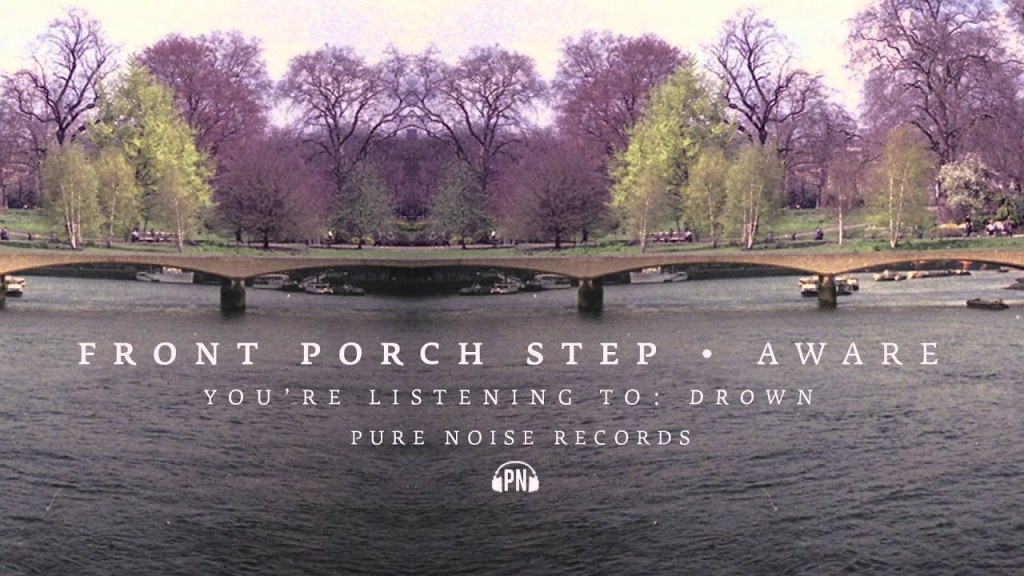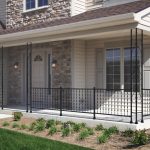Unveiling The Spellbinding Tale Of The Drowning Front Porch Step: Dive Into Its Captivating Mystery Now!
Drowning Front Porch Step
Introduction
Greetings, Porch Lovers! In this article, we will be discussing the concerning issue of drowning front porch steps. This is a topic that affects many homeowners and porch enthusiasts alike. Whether you are a proud owner of a porch or simply someone who admires the charm they bring to a home, it is essential to understand the potential dangers lurking in one of the most crucial parts of your porch – the steps. We will delve into the what, who, when, where, why, and how of drowning front porch steps, as well as discuss the advantages and disadvantages of different materials used. So let’s not waste any more time and dive right in!
1 Picture Gallery: Unveiling The Spellbinding Tale Of The Drowning Front Porch Step: Dive Into Its Captivating Mystery Now!

What is Drowning Front Porch Step?
Introduction

Image Source: ytimg.com
The term drowning front porch step refers to the hazardous condition where water accumulates on the steps, posing a risk to anyone using them. This problem is particularly prevalent in areas with heavy rainfall or during the winter months when snow and ice can melt and create a slippery surface. Drowning front porch steps can lead to accidents and injuries, making it vital to address and prevent this issue.
Causes of Drowning Front Porch Step
There are several factors that contribute to the occurrence of drowning front porch steps. Improper drainage, inadequate slope, or damaged gutters and downspouts can lead to water pooling on the steps. Additionally, the use of unsuitable materials that do not provide adequate traction can exacerbate the problem. Identifying the root causes is crucial in finding effective solutions to prevent drowning front porch steps.
Effects of Drowning Front Porch Step
The consequences of drowning front porch steps can be severe. Slip and fall accidents are the most common outcome, which can result in various injuries such as broken bones, sprains, and head trauma. Furthermore, the accumulation of water can degrade the structural integrity of the steps, leading to costly repairs or even collapse. It is essential to take prompt action to prevent these potentially dangerous situations.
Prevention of Drowning Front Porch Step
To prevent drowning front porch steps, there are several measures you can take. Ensuring proper drainage and maintaining gutters and downspouts in good condition is essential. Installing slip-resistant materials on the steps, such as rubber treads or anti-slip coatings, can greatly reduce the risk of accidents. Regular inspection and maintenance of the porch steps are also crucial to identify and address any issues promptly.
Materials for Front Porch Steps
When it comes to choosing materials for front porch steps, there are various options available. Each material has its own advantages and disadvantages in terms of aesthetics, durability, and slip resistance. Common choices include wood, concrete, stone, and composite materials. It is important to consider your specific needs, climate conditions, and maintenance requirements before deciding on the most suitable material for your porch steps.
Advantages and Disadvantages
Let’s explore the advantages and disadvantages of different materials used for front porch steps:
Wood
Advantages: Wood offers a classic and natural look, is relatively affordable, and can be easily customized. It can also provide good traction when properly maintained.
Disadvantages: Wood requires regular maintenance, such as sealing, staining, and painting. It is susceptible to rot, insect damage, and warping if not properly cared for.
Concrete
Advantages: Concrete is durable, long-lasting, and requires minimal maintenance. It can be molded into various shapes and can provide a sturdy and slip-resistant surface.
Disadvantages: Concrete can crack over time, especially in extreme weather conditions. It can also be prone to staining and may lack the aesthetic appeal of other materials.
Stone
Advantages: Stone steps offer a timeless and elegant appearance. They are highly durable, resistant to weathering, and provide excellent traction.
Disadvantages: Stone steps can be costly, especially if using high-quality materials. They may require professional installation and periodic sealing to maintain their condition.
Composite Materials
Advantages: Composite materials, such as fiberglass or PVC, are low-maintenance, resistant to moisture, and provide good slip resistance. They can also mimic the appearance of natural materials.
Disadvantages: Composite materials can be more expensive compared to other options. They may not offer the same level of durability as natural materials and can be prone to fading over time.
Metal
Advantages: Metal steps, such as aluminum or steel, are lightweight, durable, and require minimal maintenance. They can be a cost-effective option and offer good traction.
Disadvantages: Metal steps can become hot in direct sunlight or cold during winter months. They may not provide the same aesthetic appeal as other materials and can be prone to rust if not properly treated.
FAQs (Frequently Asked Questions)
Q: How often should I inspect my porch steps for potential hazards?
A: It is recommended to inspect your porch steps at least once every season to identify any potential hazards and address them promptly.
Q: Can I install anti-slip materials on existing porch steps?
A: Yes, there are various anti-slip materials available that can be retrofitted onto existing porch steps to improve traction and prevent accidents.
Q: Are there any temporary solutions to prevent water accumulation on porch steps?
A: Placing non-slip mats or adhesive treads on the steps can provide temporary relief by enhancing traction and absorbing water. However, it is essential to address the root causes to ensure a long-term solution.
Q: How can I maintain wooden porch steps to prevent water damage?
A: Regularly sealing and staining wooden porch steps can help protect them from water damage. It is also important to address any signs of rot or insect infestation promptly.
Q: Can I hire a professional to install slip-resistant materials on my porch steps?
A: Yes, hiring a professional can ensure that the slip-resistant materials are properly installed and provide effective traction to prevent accidents.
Conclusion
In conclusion, drowning front porch steps can pose serious risks to homeowners and porch enthusiasts. By understanding the causes, effects, and preventive measures, you can ensure the safety and longevity of your porch steps. Remember to choose the right materials, maintain them regularly, and address any potential hazards promptly. Don’t let your porch become a danger zone; take action now to prevent drowning front porch steps and enjoy your porch with peace of mind!
Final Remarks
Disclaimer: The information provided in this article is for educational purposes only and should not be considered as professional advice. It is always recommended to consult with a qualified contractor or expert for specific guidance on your porch steps and potential risks. Stay safe and enjoy the beauty of your porch!
This post topic: Front Porch



